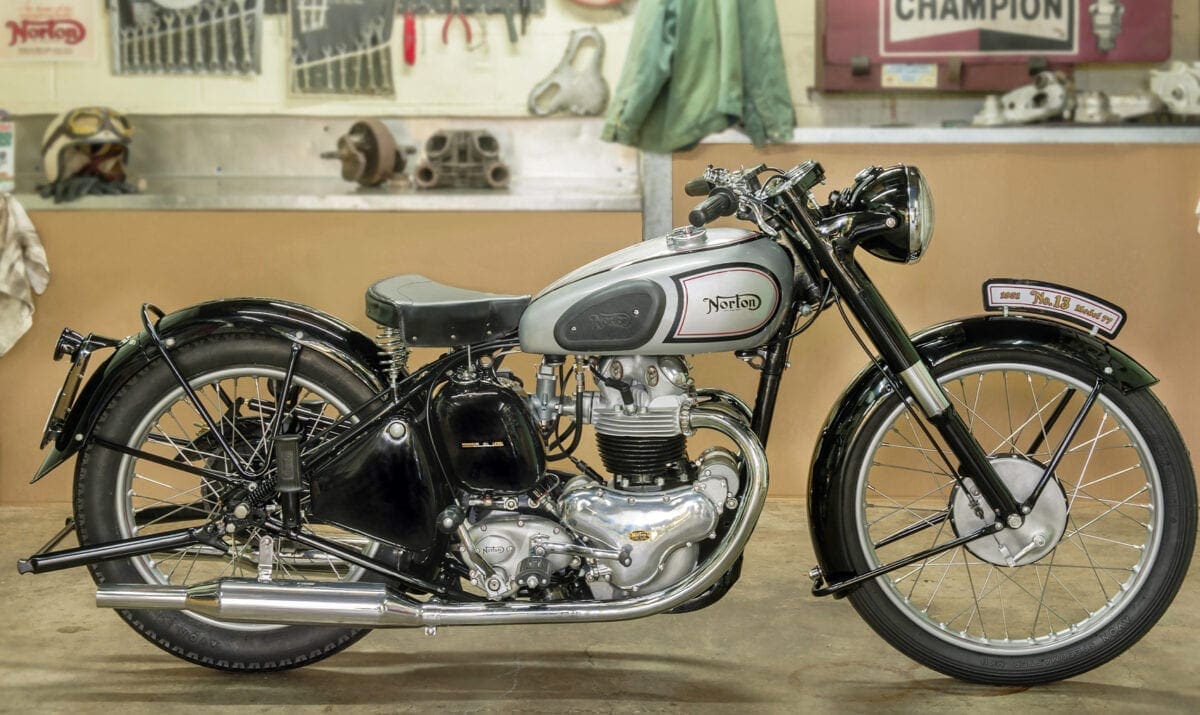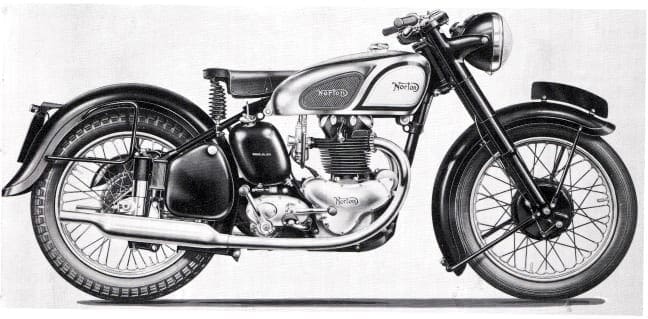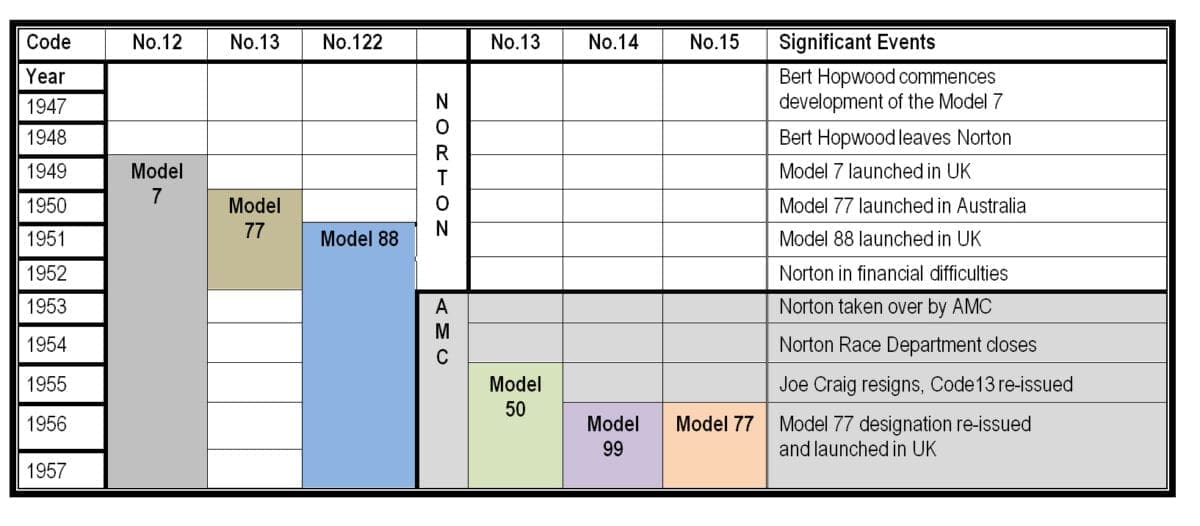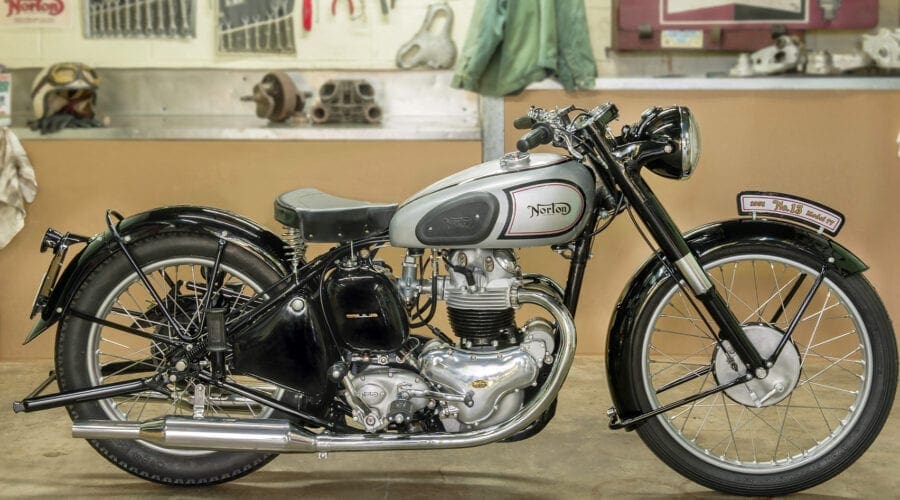The history of Norton’s sporting twin is well-known around the world, but enthusiast Bruce J Tinworth has uncovered intriguing details about how a very special version of the Dominator ended up in Australia. But first, some background information…

In the depressed, post-war economic climate, Norton Motors took a keen interest in the burgeoning American export market. For a number of years Norton entered a work’s team of American and Canadian riders in major race meetings across the USA, including the prestigious Daytona 200. Success at Daytona was an important yardstick by which excellence was judged. This translated into motorcycle sales and money in the bank.

In April of 1947, Norton Motors poached Bert Hopwood from Triumph. His brief as chief designer was to produce a multi-cylinder engine to meet the public’s growing interest in twins. Hopwood’s design skills and experience gained from working with Val Page at Ariel and Edward Turner at Triumph culminated in the 1948 plunger-framed Norton Dominator.
Enjoy more RealClassic reading in the monthly magazine.
Click here to subscribe & save.

The 497cc twin was launched at the Earl’s Court Motor Show in November 1948. Norton records indicate that the entire initial production run was exported to Australia.
In May of 1948, Hopwood left Norton and moved to BSA. Several reasons have been given for this his untimely departure. He later wrote of the invisible but impenetrable wall of secrecy between the Norton production and race departments. Hopwood also had issue with their respective budgets. The race dept was allocated 90%, with the remaining 10% allocated to the production department. Then as now, race wins translate to motorcycle sales, even though production bikes bore little resemblance to those ridden by the works race teams.
In February of 1953, a near bankrupt Norton Motors announced their imminent take-over by Associated Motor Cycles. The AMC conglomerate now included AJS, Francis-Barnett, James, Matchless and Norton. In 1954, Norton’s race department pulled out of grand prix racing but continued to provide a limited number of machines for privateer racers. Long-time NRD Manager Joe Craig retired, and shortly thereafter a motor vehicle accident in Austria ushered decades of NRD secrets to the grave. What happened behind the closed doors of NRD during this time has been the source of much conjecture and heated debate. This article is unlikely to change those attitudes, but this is what we do know…

In September of 1949 the Norton 16H, Big 4 and Model 18 received a new rigid frame to accommodate the new lay-down gearbox. Although the 1950 Norton parts lists state that the Big 4 and the Model 18 both used the new 16H rigid frame, the frames for these three models and the Model 77 are all quite different. Only the 500T retained its own short rigid frame and upright gearbox.

In preparation for the 1950 season, Bob Collier of the experimental dept took it upon himself to build a prototype, rigid-framed twin, by fitting a Model 7 engine into a modified 500T frame. When a picture of this mysterious Norton appeared in the press, Norton’s Managing Director Gilbert Smith was less than impressed.

In his ‘Norton Story’ book, Bob Holliday devotes an entire chapter to Norton’s campaign in America’spenultimate racing event at Daytona Beach. He states that in 1950 the AMA changed the regulations to ban factory specials. In spite of the changes, twenty Nortons completely dominated the next year’s race. Not long afterwards the AMA introduced even more new rules. Holliday states that regulations supplied by the AMA clearly favoured the 750cc sidevalve domestic machines.
Norton racked up five victories in seven Daytona 200 races. In five of those race seasons, the AMA handicapped Norton by introducing regulation changes banning non-production motorcycles, ohc engines, featherbed frames, and high compression engines. The AMA rule book states that for a motorcycle to be approved by the Technical Committee, ‘…there must exist a counterpart of that model which is currently being built in production quantities and offered for sale to the general public as a standard road machine…’ Production quantities varied considerable from 20 to 200 machines, depending on the year of the AMA Ruling.
In 1988, motorsport journalist Charlie Rous wrote that Norton sales in America displeased American manufacturers who pressured the AMA into framing regulations that favoured the sidevalve machines. The works racers developed for the Norton factory teams were banned. The ohv production machines remained eligible, but had to be limited to 8.5:1 compression and 500cc… while the home country teams raced 750cc machines.
Factory-prepared race bikes campaigned by privateers were further discouraged by a ‘selling clause’ in the AMA’s regulations. This clause required the winning privateer’s machine to be sold to the highest bidder. Rous concludes that the annual regulation changes all impacted on Norton’s potential competitiveness, but were less than successful, because Norton sales continued to increase.

The workers at Norton Motors documented their day’s production on work cards or dockets. Their handwritten notes were then transcribed into a record book, kept in the foreman’s office. On the flyleaf of record book No13 is the following note: 18/4/50, E13 29375, Rigid twin, Special silencers, Polished die-cast brake plate, Norton Motors to Australia…
In the first week of August of 1950, the global motorcycling public viewed a new rigid-framed, twin-cylinder Norton for the very first time. The launch of this motorcycle was not at the Earl’s Court Motor Show in the UK, but two months earlier, on the other side of the world in Queensland, Australia. And that’s where our tale continues, next time…
———
Words: Bruce J Tinworth / Photos: Bruce J Tinworth, RC RChive
———-
Advert
 Enjoy more RealClassic reading in the monthly magazine. Click here to subscribe.
Enjoy more RealClassic reading in the monthly magazine. Click here to subscribe.


